Design of elementary school and autism centre
Design of elementary school and autism centre
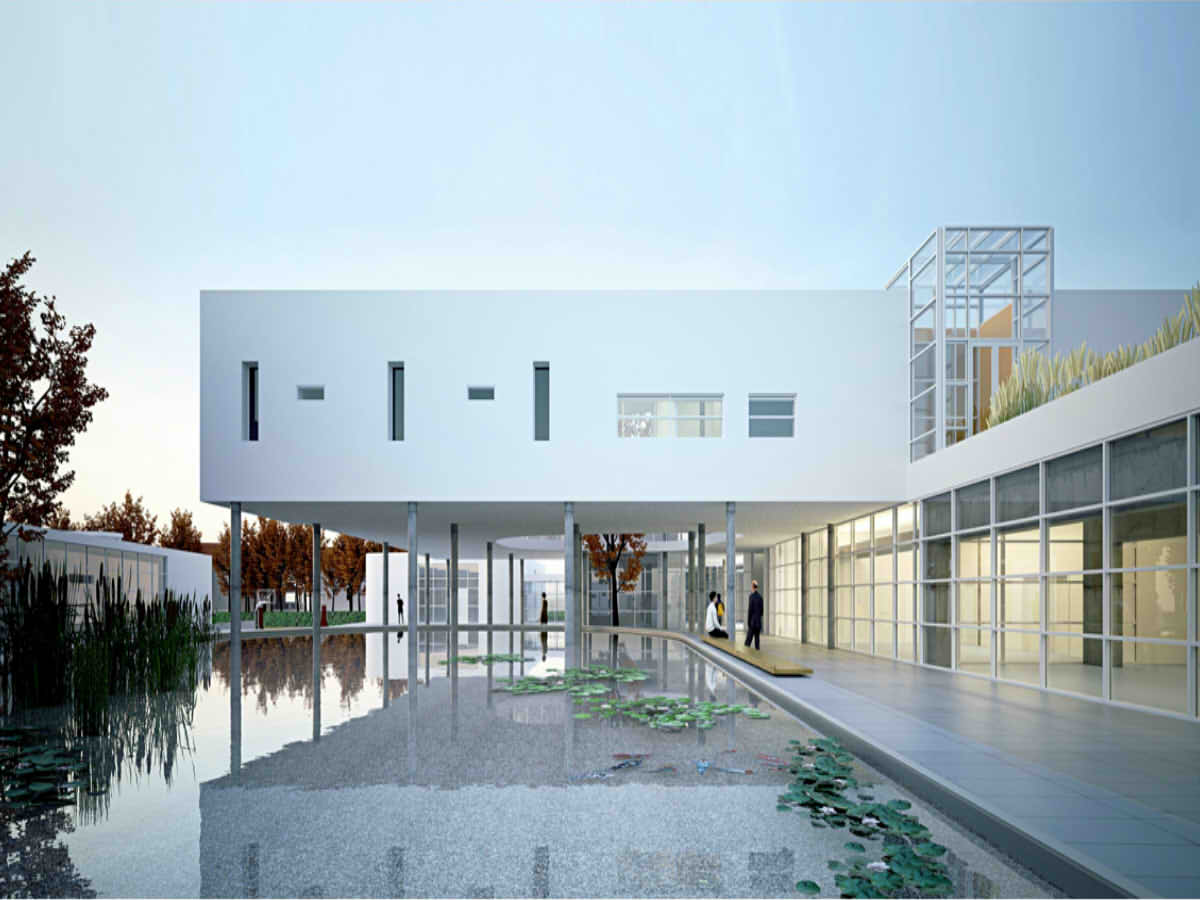
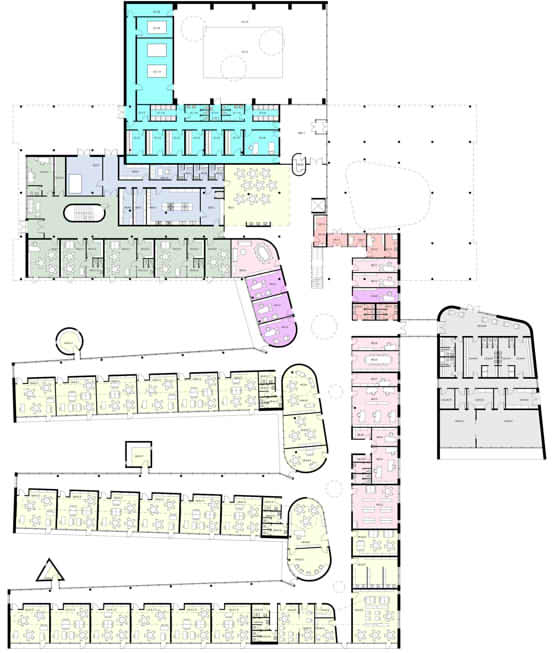
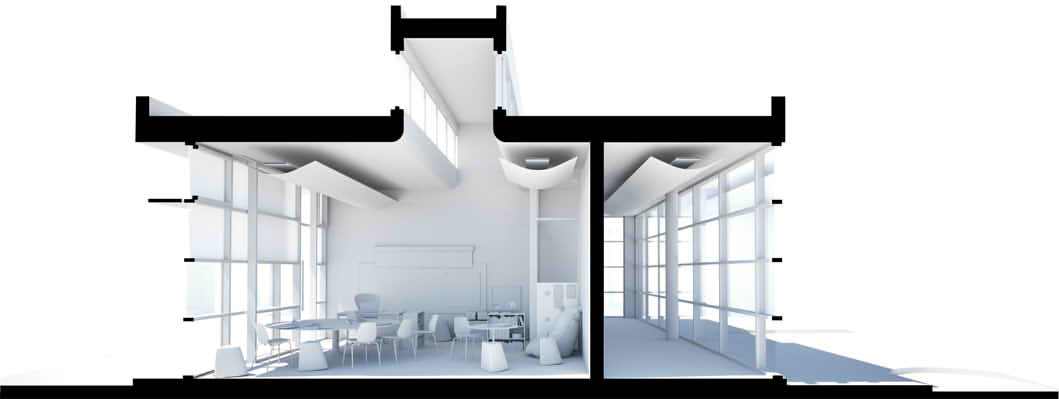
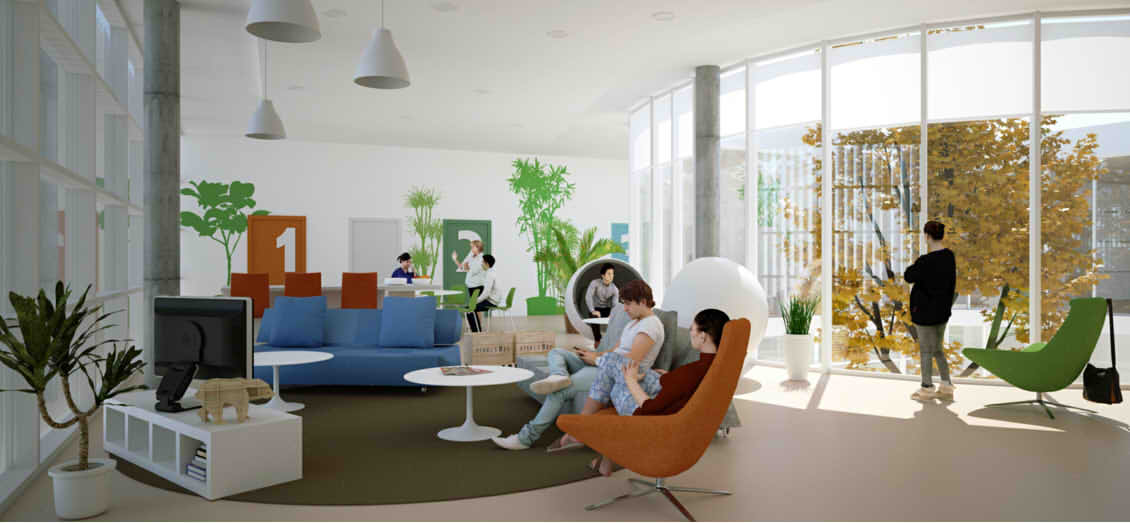
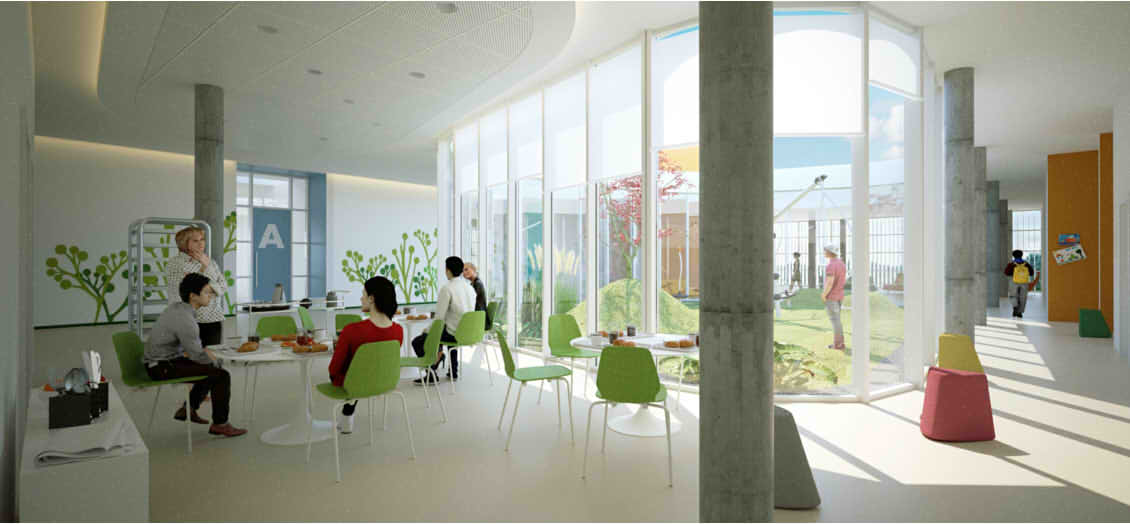
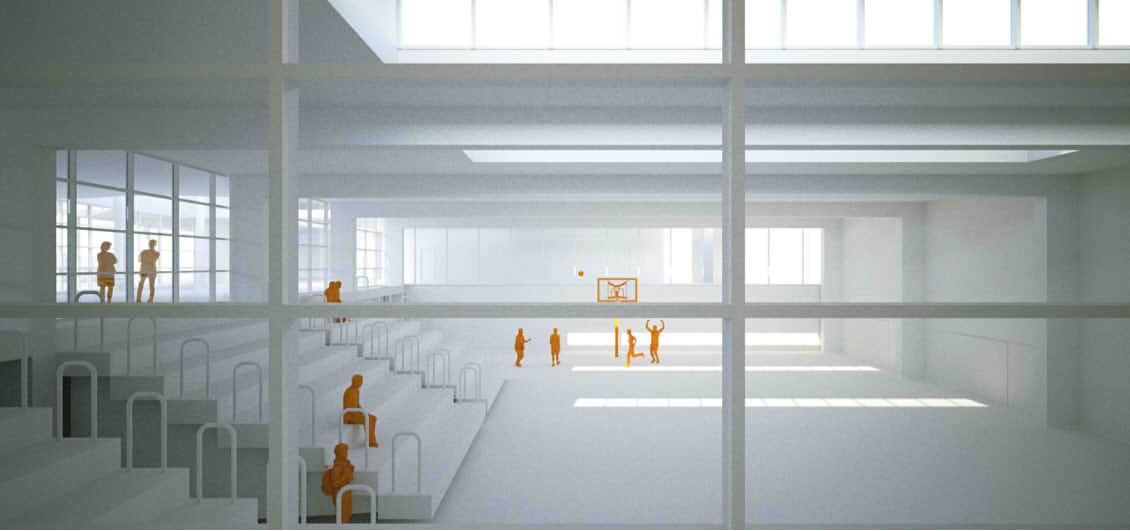
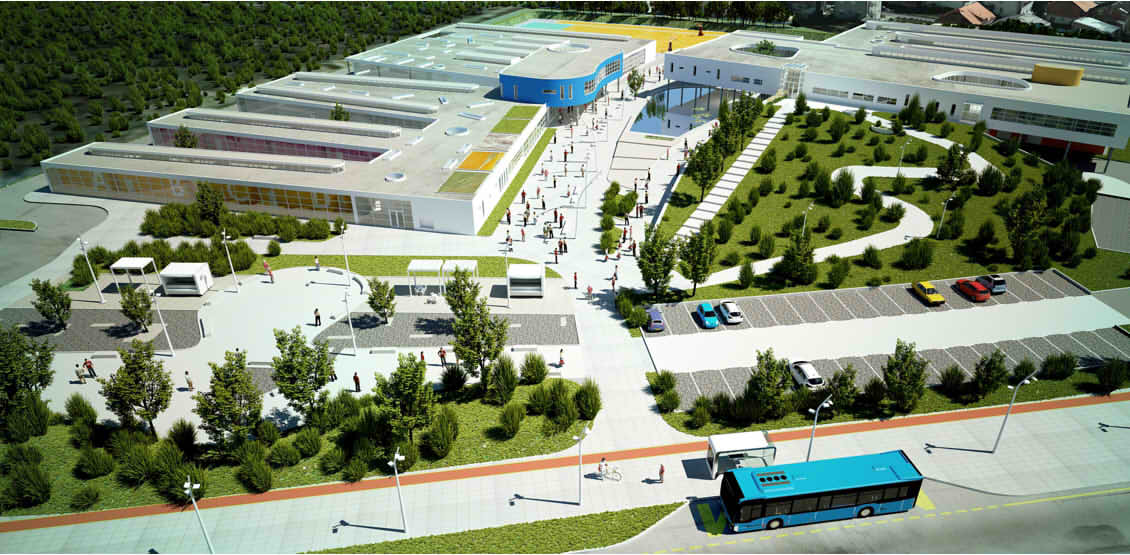
Preamble
We would interpret the brief as calling for three main objectives
· To design an autistic Centre
· To design an elementary school
· To provide a “holistic“ response to the whole given location
There are three “parcels” which are given as three quite separate programmes but will ultimately share common access.
These being:
· Autistic Centre
· Elementary School
· Green Area
Our approach to the above is to provide a proposal to all three but also create a plan of integration with some common elements, which can be adopted or reduced (in the case one of two of the 3 is NOT constructed at the same time*)
*We would consider a sustainable result can only be achieved if a complete environment is achieved.
Holistic Approach
Master plan
The two main intuitions are considered to share a common landscape and concept of park and square ( lake). Each institution however has its own designated entrances (see access plan)
The two institutions are therefore considered as one complex but may be constructed separately on their own parcel.
The central Lake – Quad
The quad area provides common territory for the pupils and users from both institutions to “mingle” informally and interact around a large water features (lake with fountains) which would by default create a climate of calm (the lake is also a reservoir for rainwater and gray-water collection).
Around the lake is a continuous low parapet wall which is at a height suited for sitting. To the north of the lake is proposed a deck area for fishing and model boat playing. This aspect of the common space provides a place for pupils to play and interact together. This same common territory extends down south to the external sports grounds which conversely can be accessed from the respective schools sports halls.
The whole complex has, therefore, three main access points. The northeast for the regular car park and vehicles ( for the Elementary School) and the north west (for the Centre for Autism). Continuing on from the two car-parks services routes run on the west and east perimeters of the joint parcels and to the south join on this southern border beyond the sports grounds.
Landscaping and Land territory
We have used the land in three specific ways
1.0 To respond to and fuse with the change of height of the two main institutions.
A: Autism Centre :the Jack-Jill Hill to the north between the car-park and the Therapy Unit (under the hill is the swimming pool hall).
B: Elementary School: a dropping of the sport halls provides and opportunity to integrate the hall into the internal function of the school (see main functional areas) and have a direct connection the external sports fields
2.0 a holistic hard and soft landscape with routes and planting which acts as a fusion (the quad) and frame (the ha-ha route) to the whole complex
3.0 to create a single landscape which is brought in to the education area between the classroom fingers (and at roof-level on the elementary school – biological and horticultural gardens).
Arrangement of functions
Elementary school
The Elementary School is mainly arranged on a single level, with horizontal access and circulation. The footprint provides a central street off which all functions are accessible either in finger plans (arranged to face finger gardens – all classrooms)
The proposal for Elementary school complies with the required capacity of approximately 490 children accommodated in 18 classes. Arranged in two “sets”
- Grades 1-4 ( in the Northern Fingers A&B)
- Grades 5-8 (in the Southern Fingers C, D & E)
Center for Autism
The set of the Center for Autism includes two institutions:
· Teaching Center for Autism
· The Therapy Centre for Rehabilitation.
Whilst more or less separate in terms of function there is a common link between the two as follows:
The two institutions share an entrance and base-line service facilities (kitchen and cleaning and HVAC and all utilities) The Therapy unit has nonetheless its own access from the hill garden to the north.
Lighting
Lighting is the most important psychological and physiological factor in the Autism centre :
for natural lighting we use ambient daylight through either glazed panels or internal roler blinds which block direct glare (after filtering through the thermal glazed panels).
This is a specific design in the classroom and Therapy Centre where both direct light and glare is to be avoided.
The lighting strategy for the Autism centre provides for a flexible control and shaping of both natural and artificial light so as to respond to demands from different children behaviour. So a combination of high-level lighting from roof-lights and light shelves in the facades can be varied by opening all roller blinds during morning class for indirect daylight.
All artificial lighting will be LED and/or tungsten type.
Depending on the form and use of space, quality and brightness can be controlled by teachers with a combination of roof-light shutters, facade roller blinds to provide uniform and largely diffused lighting. Daylight is therefore complementary to, and in some cases replaces, artificial light.
Detailed calculation of artificial lighting to lighting will result in a properly balance in each room. In general, use of lower intensity lighting will be proposed.
Cross-section of window frames, pillars between openings and direct aspect southern glazing are designed to minimize shadows, avoid glare, and high contrast light/darkness spots.
Colour
The interior design of the Centre, is cantered on light, colour and climate. Colour is used as a functional element which stimulates of the user. Colours are selected, to provide contrast, and to contribute to low and higher spaces.
Colour is created to :
· differentiate important elements,
· facilitate the recognition of certain spaces and circulation,
· to autonomy and interaction of users.
The colours are adjusted to the age group of users. Stronger contrasts and bright colours are specified for area used by younger children (who will positively respond to these stronger colours), while the older children may respond better to colder colours and pastoral shades.
The overall colour scheme can be adjusted with further briefing with the expert client team. The current design proposal allows for various of changes to be carried out in a later design stage to include both lighting wash-modelling and a more comprehensive colour chart mapping for each zone of the complex.
Material for the interior would be specified as maximum hard-wearing and provide (especially to the Autism centre ) a sense of comfort and well-being.
Walls in a classroom would be waterproof with a high grade egg-shell paint.
Colour ranges will respond to A: calm pasture colour in the autism center and B: provide easy indication to the different section of all parts of the complex.
Environmental engineering
We propose a combination of natural and mechanical ventilation for delivering a constant stream of fresh air in through the both institutions.
Heating and Cooling
The whole Heating and Cooling concept is based on ground-energy
Heating : All therapy and classroom (and any rooms were children are likely to sit on the floor) would have under floor heating with wall mounted convectors in other areas. Fan coils would be fitted with booster heating units to warm-up the ambient air during winter months in the mornings (pre-school hours)
Cooling would equally be via heat- exchangers and heat pumps which provide cooling to any functional area (via AHUs and fancoil units)
All classrooms would have a combination of adjustable roof/ceiling vents and facade openable top-lights and large openable doors/screens on the facade (these are also integral part of the daylight concept).
Most spaces would be top-lit via roof glazed portals which also provide natural ventilation.
CONCEPTS
Autism centre Oporovec
-
SERVICES RENDERED
Design
-
PROJECT SIZE
13.000m2
-
PROJECT VALUE
100.000.000 HRK
-
PROJECT PERIOD
2016 – 2017
-
INVESTOR
Zagreb municipality




